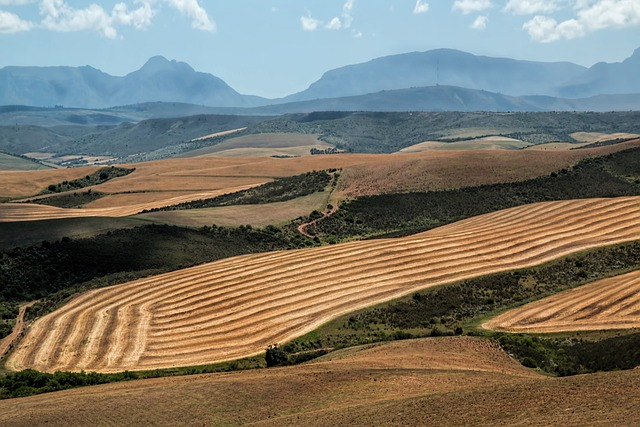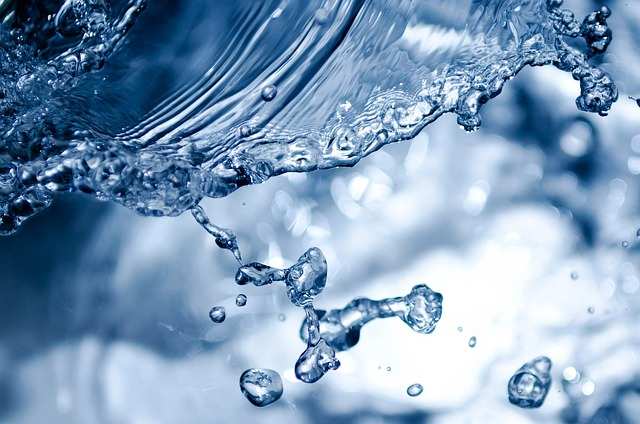Wendy Gady is the Executive Director of The Agribusiness Development Corp. In the following article, Wendy Gady discusses something often taken for granted: water access in farming.
Water, the lifeblood of our planet, plays a pivotal role in agriculture, which in turn sustains our ever-growing population. With the increasing demand for food and water resources, understanding the crucial role of water access in crop growing is becoming more critical than ever. Below explores strategies for sustainable water use in farming, ensuring that the food on our tables is produced efficiently and responsibly.
Wendy Gady on the Significance of Water in Agricultural Production

Agricultural productivity, crop growth, and livestock maintenance are all significantly influenced by water in agriculture. In fact, during the period of 1997-1999, 59 countries relied on irrigated agriculture, with a large percentage of their cereal production coming from irrigated land.
Wendy Gady notes that with growing populations the pressure on water resources is mounting. Rising pressure on water resources accentuates the necessity for sustainable water management practices, efficient infrastructure, and innovative solutions for optimizing ag water use. Understanding water consumption in agriculture is fundamental for improving productivity, crop growth, and livestock maintenance.
Crop Growth
Water is indispensable for crop growth on irrigated land, as it supplies nutrients and sustains soil moisture for ideal plant growth. Additionally, it aids in regulating temperature and safeguarding plants from disease. However, Wendy Gady notes that water scarcity can have severe consequences, such as decreased crop yields, heightened susceptibility to pests and diseases, and increased risk of crop failure.
Adopting sustainable water use strategies, including integrated water resources management, and technological innovations like drip irrigation, can help overcome these challenges. These strategies not only ensure sufficient water access for crop growth but also contribute to the overall resilience and sustainability of agricultural practices.
Livestock Maintenance
Water access is essential for animal agriculture, as it is required for drinking, cleansing, and sustaining their living environment. The bulk of livestock’s ‘water footprint’ is attributed to water utilized for the cultivation of grain for animal feed. Additionally, water access is imperative for cooling, dust suppression, and the cleaning of livestock and their equipment.
Hence, maintaining healthy and productive livestock populations, which contribute to overall agricultural productivity, heavily relies on adequate water access and management.
Agricultural Productivity
Wendy Gady says sustaining agricultural production and guaranteeing food security for the growing population requires sufficient water access. To ensure continued agricultural productivity in the face of these challenges, water management tactics can be employed.
Irrigation Techniques and Technologies
Understanding and employing various irrigation techniques and technologies are crucial to optimizing water use in agriculture. The two major types of irrigation systems utilized for providing water to crops are gravity and pressurized systems.
Gravity-Based Systems
Gravity-based systems refer to energy storage systems that utilize the force of gravity to store and release energy. These systems involve the lifting or movement of heavy objects, such as rocks or weights, using hydraulic or mechanical means, in order to convert the potential energy stored in these objects into usable energy when needed. In the context of irrigation, gravity-based systems rely on the natural flow of water downhill to irrigate crops.
However, the effectiveness of gravity-based systems can be reduced due to water loss through evaporation and runoff. Farmers can overcome these challenges by implementing water-saving devices, improving water management practices, and using water-efficient irrigation techniques.
Pressurized Systems
Wendy Gady explains that pressurized irrigation systems are designed to optimize water utilization and improve efficiency, using pressurized water to provide crops with water. These systems include drip and sprinkler systems, which are highly efficient in their use of water, minimizing water loss, and optimizing crop yields. However, compared to traditional irrigation systems, pressurized systems require higher energy input and maintenance, and managing them can be challenging in areas with limited access to electricity or water.
Innovations in Irrigation
Advancements in irrigation technology include precision agriculture and remote sensing, which can help optimize water use and improve agricultural water management. Precision agriculture is a farming management concept that utilizes information technology to maximize crop production and water utilization. Remote sensing involves using satellites and other technologies to gather information about the environment, including soil moisture and crop health.
Challenges in Agricultural Water Management
 Recognizing the challenges in agricultural water management is as crucial as understanding the various water sources and irrigation techniques. Wendy Gady says that some of the most significant challenges include water scarcity, pollution, and climate change. These challenges are further exacerbated by increasing demands from various sectors, limited water resources, and the rise of non-agricultural water usage.
Recognizing the challenges in agricultural water management is as crucial as understanding the various water sources and irrigation techniques. Wendy Gady says that some of the most significant challenges include water scarcity, pollution, and climate change. These challenges are further exacerbated by increasing demands from various sectors, limited water resources, and the rise of non-agricultural water usage.
Water Scarcity
Water scarcity is a growing concern for agriculture, as the demand for water from various sectors and the limited water resources available create pressure on water availability for irrigation. This can result in water shortages, decreased crop yields, and increased costs for farmers.
By adopting these strategies, farmers can ensure sufficient water access for crop growth and livestock maintenance, while promoting sustainable agricultural practices. In turn, this can contribute to the overall resilience and sustainability of agricultural systems in the face of growing water scarcity challenges.
Pollution
Agricultural pollution can have a detrimental effect on water quality and aquatic ecosystems. Some of the impacts include:
- Nutrient runoff, which can lead to eutrophication and algal blooms
- Agrochemical contamination, which can harm aquatic life
- Water quality issues, which can negatively impact human health
By implementing the following strategies, farmers can reduce pollution and improve water quality, ensuring the health and well-being of both aquatic ecosystems and human populations.
Strategies for Sustainable Water Use in Agriculture
As we have seen, sustainable water use in agriculture is essential for maintaining food security and supporting the livelihoods of billions of people worldwide. Wendy Gady says strategies such as integrated water resources management, water pricing and allocation, and technological innovations can help promote sustainable water use in agriculture, ensuring efficient and responsible food production.
In the following sections, we will explore these strategies in more detail, discussing their benefits, challenges, and potential applications in agricultural water management. By understanding these strategies and implementing them where appropriate, we can work towards a more sustainable and resilient future for agriculture and water resources.
Integrated Water Resources Management
Wendy Gady explains that integrated water resources management (IWRM) is a comprehensive approach to managing water resources, considering the needs of various sectors and promoting sustainable water use. IWRM can facilitate the sustainable utilization of water resources, mitigate disputes among different users, and foster economic and social prosperity.
However, the complexity of IWRM, the need for stakeholder coordination, and adequate funding can make its implementation challenging. Despite these challenges, IWRM remains an essential strategy for ensuring the sustainable and efficient use of water resources in agriculture and other sectors, helping to promote the overall resilience and sustainability of agricultural systems.
Technological Innovations
Technological innovations, including advanced irrigation systems and water-saving practices, are instrumental in promoting sustainable water use in agriculture. Advanced irrigation systems, like drip and sprinkler systems, can help optimize water utilization and improve efficiency, while water-saving practices such as rainwater harvesting and efficient irrigation techniques can reduce water use and improve water availability.
Adoption of these innovative technologies and practices enables farmers to:
- Make informed decisions on water use and irrigation
- Ensure efficient and responsible food production
- Contribute to the overall resilience and sustainability of agricultural systems
- Help secure the food supply for present and future generations.
Summary
Wendy Gady explains that by understanding the importance of water in agriculture and implementing strategies such as integrated water resources management, water pricing and allocation, and technological innovations, we can work towards a more sustainable and resilient future for agriculture and water resources. Together, we can ensure that the food on our tables is produced efficiently and responsibly, helping to secure the food supply for present and future generations.


